© 2023 Dr. M. Sheppard
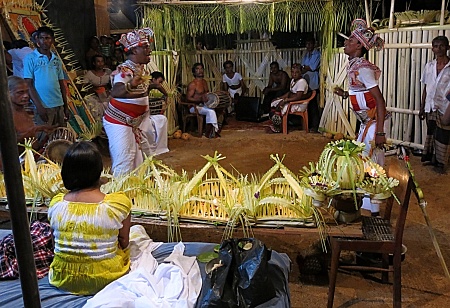
The patient was seated on a bed with the Flower Fence of offering baskets in front of her. On the bed were carrier bags containing the offerings she would be placing into the offering baskets during the Tovil on the instructions of the Tovil dancers. In the background the Tovil dancers not involved in this dance were relaxing in the Demon Palace. Behind the man with the turquoise shirt on the left is the clay picture specially constructed for this Tovil. It shows Kalu-

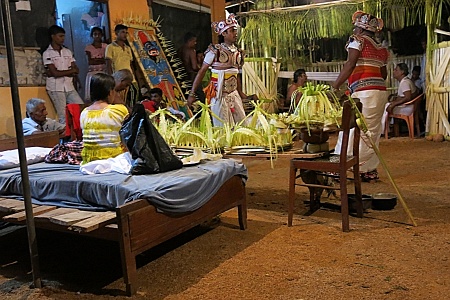
The Tovil dancers were singing about the ceremony as they danced. They gave examples in their songs of how ancient Queens had been cured by this ceremony from the same problem from which this young woman was suffering.
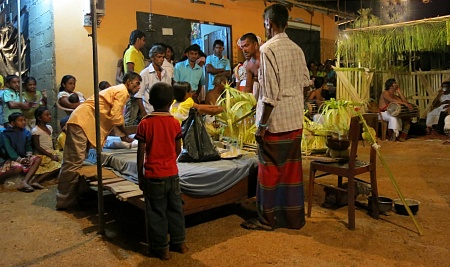
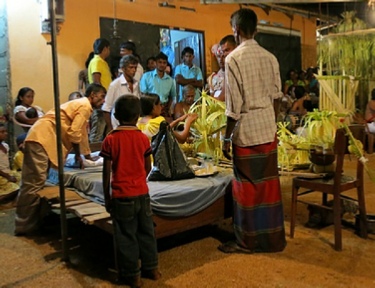
Periodically, the patient was instructed by the Tovil dancers to place the appropriate offerings into the offering baskets.






The dancing became much faster and there was some whirling
Then one of the offering baskets was lifted above the patient and passed over her head.


She made obeisance to the offering basket which was carried away.
The cock was then lifted above her head.
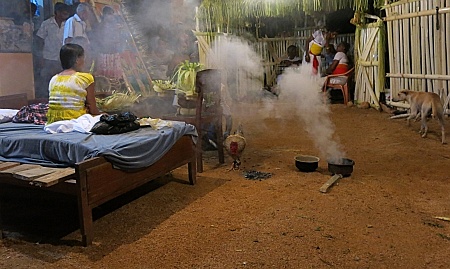
The whole area was then “smoked” to call the demons to the area so that they could receive their offerings and in return release the patient from her affliction
This is a special Tovil ceremony held for a woman who is experiencing difficulties in conception or pregnancy.
Briefly the dances and mantras relate the myth of how Ridi Bisava and her seven daughters came to afflict women.
These seven daughters became demons (Yakkiniyo) and are among the assistants of the powerful demon Kalu-
The Myth
A long time ago fire broke out on one of the mountains of the Himalayas – Mahameru-
Ridi-
They joined Kalu-
They agreed to this restriction and became known as “the Seven Queens who make women barren”.
The Rata-Yakuma Ceremony
During this ceremony the above myth is enacted in the songs, dances and mimes of the dancers and drummers.
The dancers wearing the white costumes represent the seven daughters of Ridi-
One of the Ratayakuma Tovils I attended was held for a young lady who was about 5 months pregnant. She had been frightened by dogs fighting near her. As she was still experiencing problems, this Ratayakuma tovil was arranged for her by her family to ensure she had a safe pregnancy and did not miscarry. The family appeared fairly poor and the tovil was held at their home in a remote rural area.
This ceremony was similar, but not identical, to the descriptions of these ceremonies described by Wirz and Kapferer -
When we arrived about 9.30pm it was the Evening Watch and the tovil dancers were dancing wearing their decorated crowns . In this series of dances they first asked one of the drummers what was happening and on being told by the drummer they then performed the series of dances and songs relating the myth of the origin of the seven sisters.


Baby Tovil - Ratayakuma
This type of Tovil is described in much fuller detail by:
Bruce Kapferer in “A Celebration of Demons” p 226-
Paul Wirz in “Exorcism and the Art of Healing in Ceylon” p.65-
“Rata yakuma or Riddi Yagaya “ by Janani Amarasekara, 1/4/2007 Sunday Observer -
The first two references describe the ceremony in social anthropological detail and the latter is a newspaper article.)